
Maya News Updates 2010, No. 20: Tak'alik Ab'aj, Retalhuleu - Spectacular Archaeological Discovery of Various Miniature Mosaic Portraits
Yesterday, Monday, May 10, 2010, the online edition of The Guatemalan Times posted a detailed and well illustrated report on the spectacular archaeological discovery of several miniature mosaic portraits masks or heads at the site of Tak'alik Ab'aj, Department of Retalhuleu, in Guatemala on March 23, 2010. The findings date from the Early Classic, the Alejos phase at circa A.D. 150-300 (edited by MNU; photo: Guatemalan Times/Tak'alik Ab'aj National Project, Ministry of Culture and Sports of Guatemala):
 Mysterious Mayan ceremonial head found at Tak'alik Ab'aj - Discovery of an extraordinary offering of a jadeite mosaic miniature ceremonial head underscores the importance and political power at the beginning of Early Classic of the ancient Maya city Tak’alik Ab’aj
Mysterious Mayan ceremonial head found at Tak'alik Ab'aj - Discovery of an extraordinary offering of a jadeite mosaic miniature ceremonial head underscores the importance and political power at the beginning of Early Classic of the ancient Maya city Tak’alik Ab’aj
Tak'alik Ab'aj is an ancient pre-Hispanic city situated in El Asintal, Department of Retalhuleu at the pacific piedmont of Guatemala. This important long distance trade and cosmopolitan cultural center is transcendent because of its long history which endured 1700 years (800 B.C. - 900 A.D). At its beginnings Tak'alik Ab'aj interacted and participated with the Olmec culture, and at its surmise, was one of the protagonists in the development of the early Maya culture. This particularity in addition to the extraordinary production of sculpture programs during these two important cultural periods, make Tak'alik Ab'aj unique in the history of Mesoamerica.
Previous excavations conducted in the center of Structure 6 - one of the most important ceremonial buildings of the main architectonic complex called Central Group at Tak'alik Ab'aj - revealed a series of precious offerings. These offerings were deposited in a sequence of episodes into the earthen construction fill of one of the last versions of this building during the first part of Early Classic (A.D. 150-300 - Phase Alejos).
These offerings consisted of ceramic vessels, the most beautiful of these vessels is decorated with a stepped fret design; a small pedestal stone sculpture, re-used to ceremonially grind jadeite, plenty of intentionally broken stone grinding artifacts for maize or probably cacao (metates), a pyrite mosaic mirror and a few pieces of jadeite.
On March 23, 2010 the team of archaeologists of Tak´alik Ab´aj, discovered in the ongoing excavations at the center of Structure 6 another extraordinary treasure: an offering of 50 jadeite mosaics which had been deposited into the soil of the mentioned construction fill.
These mosaics compose a miniature ceremonial head with celt like plaques hanging underneath the chin, which were worn as part of the ceremonial waist belt of the rulers, as is vastly represented at the Maya steles from Preclassic to Classic times. These miniature ceremonial heads are made of jadeite mosaics, masterfully worked in order to fit neatly together like a puzzle.
In previous excavations at Tak'alik Ab'aj archaeologists had experienced the unique opportunity to find a miniature ceremonial head made of blue jadeite mosaics in situ in the royal burial No. 1 which had been introduced in Structure 7, the most sacred building of the Central Group by end of the Late Preclassic (200 B.C. - A.D. 150 - Phase Ruth). The precise position of the miniature mosaic head in the waist area of the burial confirmed by then that effectively those miniature heads were part of the ceremonial waist belt, an element which can be considered as important in the royal outfit worn by the rulers as the headdress.
Formerly at the western architectonic complex called West Group at Tak'alik Ab'aj, a massive jadeite mosaic offering had been found at Structure 86, dated to the first part of Early Classic (A.D. 150-300 - Phase Alejos). Those mosaics, corresponding to 4 jadeite mosaic ceremonial head assemblages had been deposited in a vessel decorated with a stepped fret design.
The archaeologists, trying to assemble the recently discovered ceremonial head mosaics from Structure 6, were surprised to find out that the mosaics, additionally to the ceremonial head, form a bat miniature head as the headdress of the ceremonial head itself. This particularity distinguishes and makes this ceremonial miniature head unique. With the present ceremonial jadeite mosaic miniature head, Tak'alik Ab'aj has 6 of those ceremonial miniature heads. This quantity seems superior to the miniature ceremonial jadeite mosaic heads registered at any other archaeological site in Mesoamerica and would place Tak'alik Ab'aj as a superlative center with the possession of this kind of lapidary artifacts, together with the exhibition of hundreds of sculptures.
It is important to underscore the fact that 5 of the 6 ceremonial miniature heads at Tak´alik Ab´aj come from archaeological contexts described above, corresponding to the first part of Early Classic. This accumulation of such precious artifacts of lapidary art represents undoubtedly a display of great wealth and power. This, and the association to a specific stepped fret design, which at that time appears on the vessels related to jadeite mosaic offerings, suggests that these mosaic ceremonial heads might be related to one of the most powerful rulers of the history of Tak´alik Ab´aj, whom for that reason has been allegorically called the "Lord of the fret design".
The archaeologists in charge are still in the process of the final assemblage of this latest find. This is just the first glimpse of the new exiting discovery in Tak´alik Ab´aj. What does it mean and who is the mysterious ruler "Lord of the fret design"? Each new finding is a chapter for new questions to be answered by arduous work and excavations of the many secrets of the story of Tak´alik Ab´aj. (Written by Barbara Schieber; source The Guatemalan Times)
Yesterday, Monday, May 10, 2010, the online edition of The Guatemalan Times posted a detailed and well illustrated report on the spectacular archaeological discovery of several miniature mosaic portraits masks or heads at the site of Tak'alik Ab'aj, Department of Retalhuleu, in Guatemala on March 23, 2010. The findings date from the Early Classic, the Alejos phase at circa A.D. 150-300 (edited by MNU; photo: Guatemalan Times/Tak'alik Ab'aj National Project, Ministry of Culture and Sports of Guatemala):
 Mysterious Mayan ceremonial head found at Tak'alik Ab'aj - Discovery of an extraordinary offering of a jadeite mosaic miniature ceremonial head underscores the importance and political power at the beginning of Early Classic of the ancient Maya city Tak’alik Ab’aj
Mysterious Mayan ceremonial head found at Tak'alik Ab'aj - Discovery of an extraordinary offering of a jadeite mosaic miniature ceremonial head underscores the importance and political power at the beginning of Early Classic of the ancient Maya city Tak’alik Ab’ajTak'alik Ab'aj is an ancient pre-Hispanic city situated in El Asintal, Department of Retalhuleu at the pacific piedmont of Guatemala. This important long distance trade and cosmopolitan cultural center is transcendent because of its long history which endured 1700 years (800 B.C. - 900 A.D). At its beginnings Tak'alik Ab'aj interacted and participated with the Olmec culture, and at its surmise, was one of the protagonists in the development of the early Maya culture. This particularity in addition to the extraordinary production of sculpture programs during these two important cultural periods, make Tak'alik Ab'aj unique in the history of Mesoamerica.
Previous excavations conducted in the center of Structure 6 - one of the most important ceremonial buildings of the main architectonic complex called Central Group at Tak'alik Ab'aj - revealed a series of precious offerings. These offerings were deposited in a sequence of episodes into the earthen construction fill of one of the last versions of this building during the first part of Early Classic (A.D. 150-300 - Phase Alejos).
These offerings consisted of ceramic vessels, the most beautiful of these vessels is decorated with a stepped fret design; a small pedestal stone sculpture, re-used to ceremonially grind jadeite, plenty of intentionally broken stone grinding artifacts for maize or probably cacao (metates), a pyrite mosaic mirror and a few pieces of jadeite.
On March 23, 2010 the team of archaeologists of Tak´alik Ab´aj, discovered in the ongoing excavations at the center of Structure 6 another extraordinary treasure: an offering of 50 jadeite mosaics which had been deposited into the soil of the mentioned construction fill.
These mosaics compose a miniature ceremonial head with celt like plaques hanging underneath the chin, which were worn as part of the ceremonial waist belt of the rulers, as is vastly represented at the Maya steles from Preclassic to Classic times. These miniature ceremonial heads are made of jadeite mosaics, masterfully worked in order to fit neatly together like a puzzle.
In previous excavations at Tak'alik Ab'aj archaeologists had experienced the unique opportunity to find a miniature ceremonial head made of blue jadeite mosaics in situ in the royal burial No. 1 which had been introduced in Structure 7, the most sacred building of the Central Group by end of the Late Preclassic (200 B.C. - A.D. 150 - Phase Ruth). The precise position of the miniature mosaic head in the waist area of the burial confirmed by then that effectively those miniature heads were part of the ceremonial waist belt, an element which can be considered as important in the royal outfit worn by the rulers as the headdress.
Formerly at the western architectonic complex called West Group at Tak'alik Ab'aj, a massive jadeite mosaic offering had been found at Structure 86, dated to the first part of Early Classic (A.D. 150-300 - Phase Alejos). Those mosaics, corresponding to 4 jadeite mosaic ceremonial head assemblages had been deposited in a vessel decorated with a stepped fret design.
The archaeologists, trying to assemble the recently discovered ceremonial head mosaics from Structure 6, were surprised to find out that the mosaics, additionally to the ceremonial head, form a bat miniature head as the headdress of the ceremonial head itself. This particularity distinguishes and makes this ceremonial miniature head unique. With the present ceremonial jadeite mosaic miniature head, Tak'alik Ab'aj has 6 of those ceremonial miniature heads. This quantity seems superior to the miniature ceremonial jadeite mosaic heads registered at any other archaeological site in Mesoamerica and would place Tak'alik Ab'aj as a superlative center with the possession of this kind of lapidary artifacts, together with the exhibition of hundreds of sculptures.
It is important to underscore the fact that 5 of the 6 ceremonial miniature heads at Tak´alik Ab´aj come from archaeological contexts described above, corresponding to the first part of Early Classic. This accumulation of such precious artifacts of lapidary art represents undoubtedly a display of great wealth and power. This, and the association to a specific stepped fret design, which at that time appears on the vessels related to jadeite mosaic offerings, suggests that these mosaic ceremonial heads might be related to one of the most powerful rulers of the history of Tak´alik Ab´aj, whom for that reason has been allegorically called the "Lord of the fret design".
The archaeologists in charge are still in the process of the final assemblage of this latest find. This is just the first glimpse of the new exiting discovery in Tak´alik Ab´aj. What does it mean and who is the mysterious ruler "Lord of the fret design"? Each new finding is a chapter for new questions to be answered by arduous work and excavations of the many secrets of the story of Tak´alik Ab´aj. (Written by Barbara Schieber; source The Guatemalan Times)


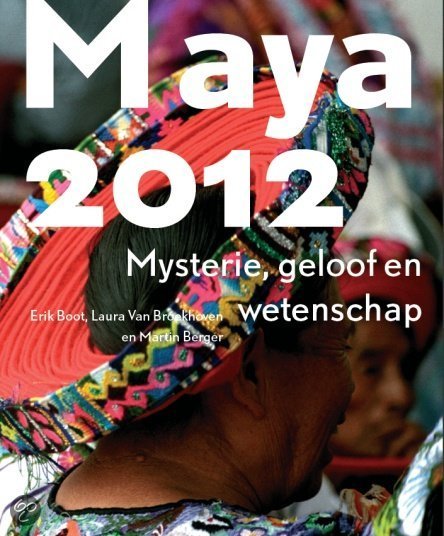



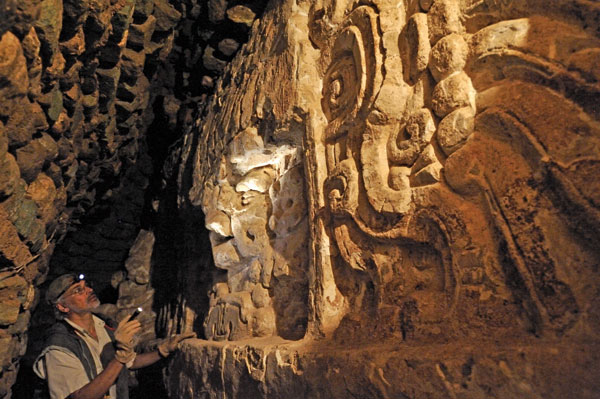
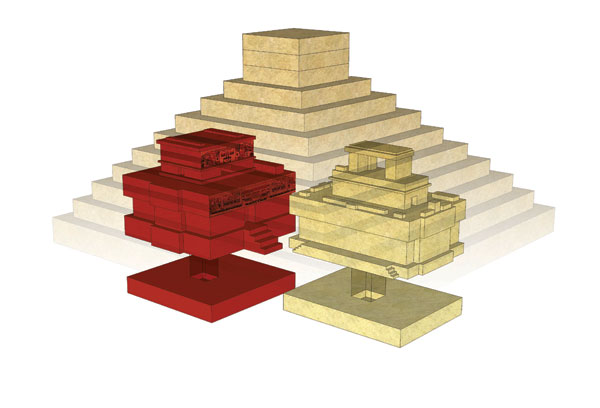
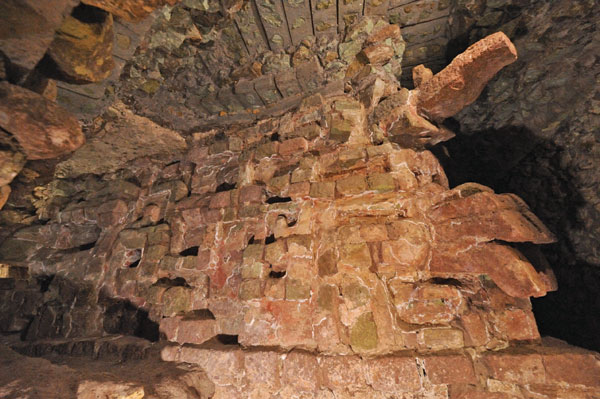





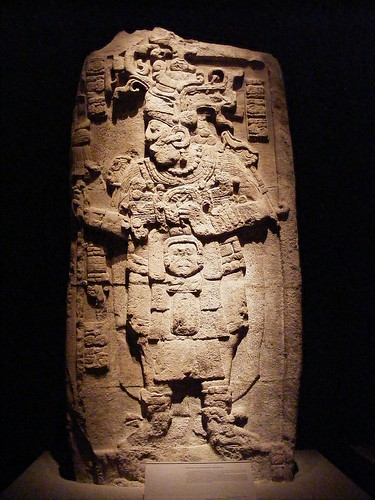


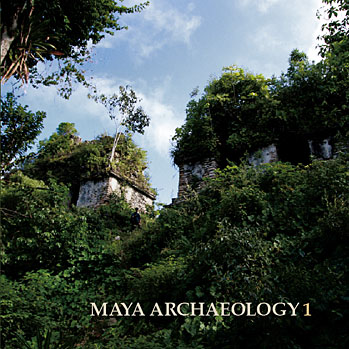









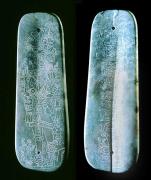


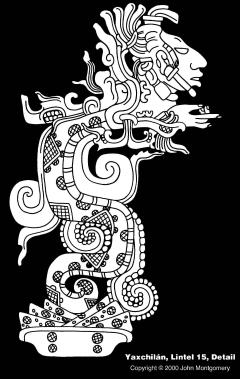

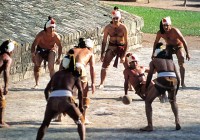


0 Comments:
Post a Comment
<< Home